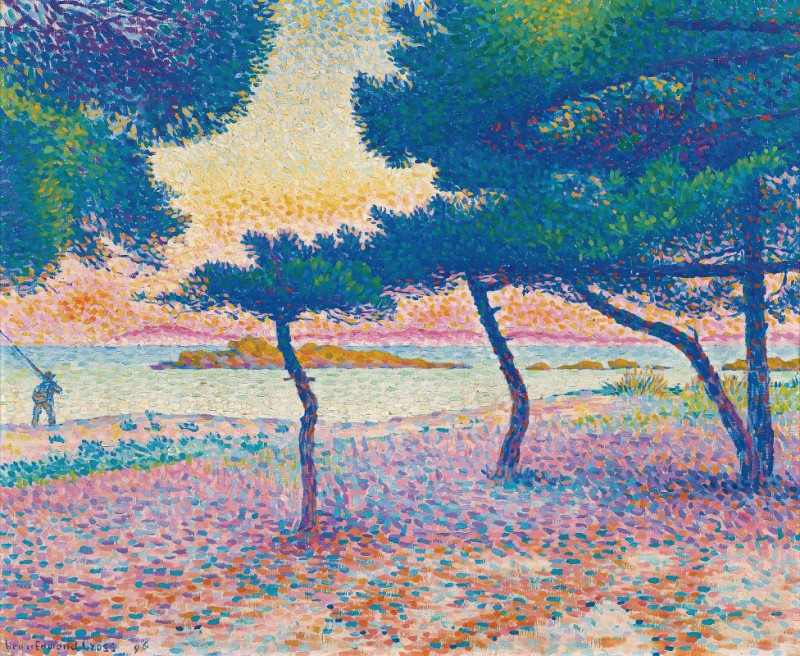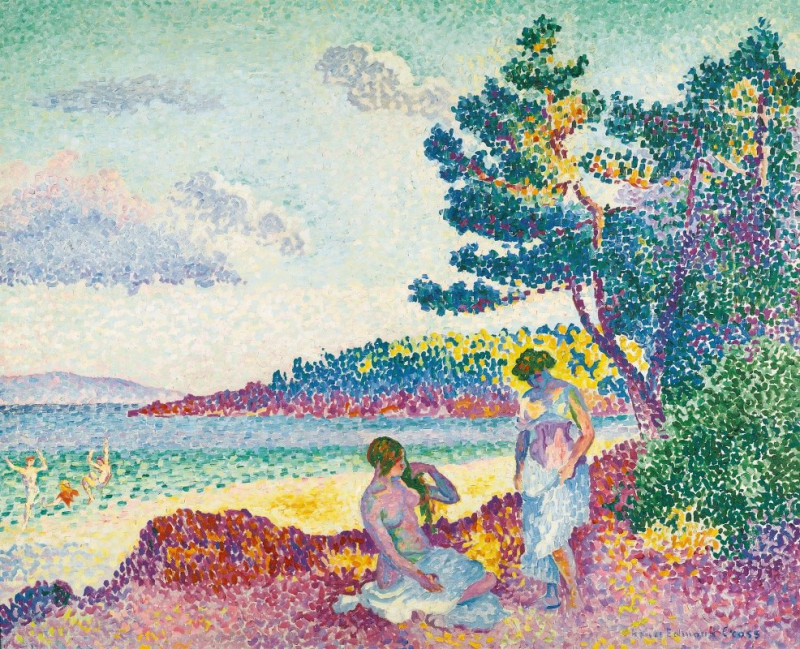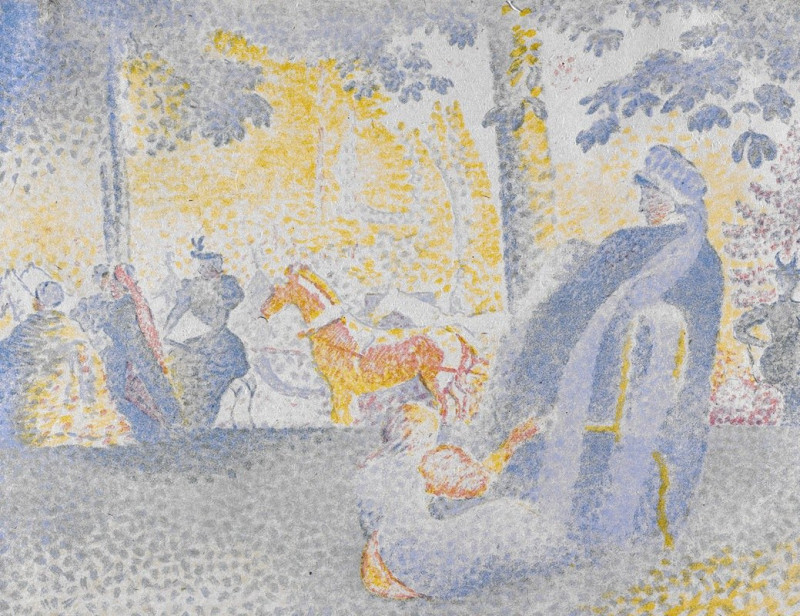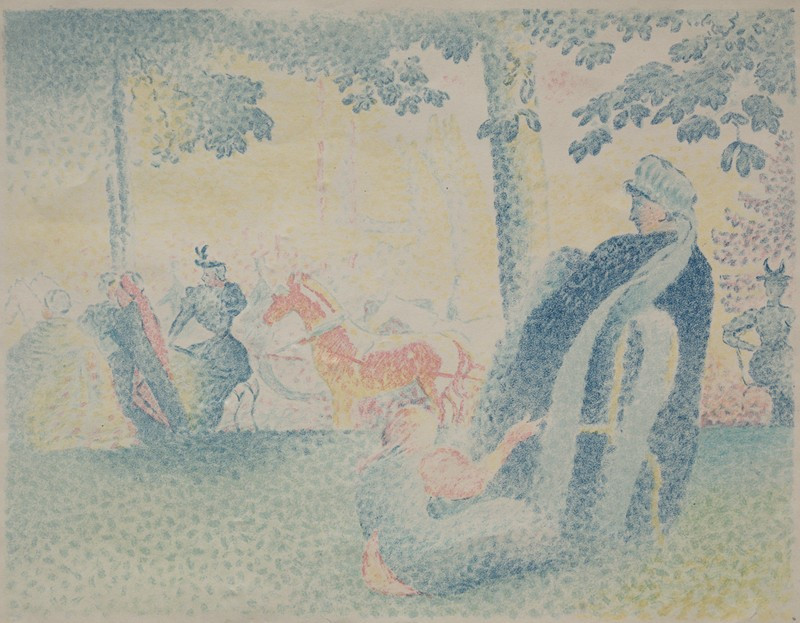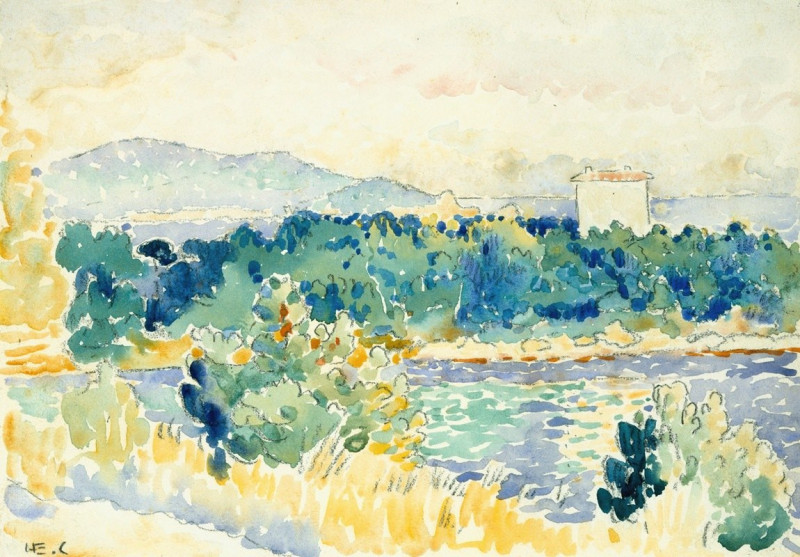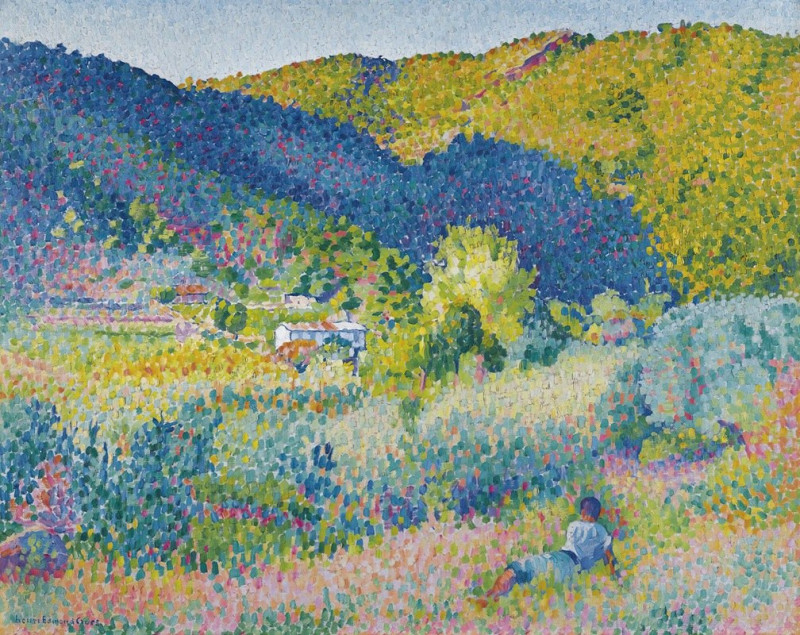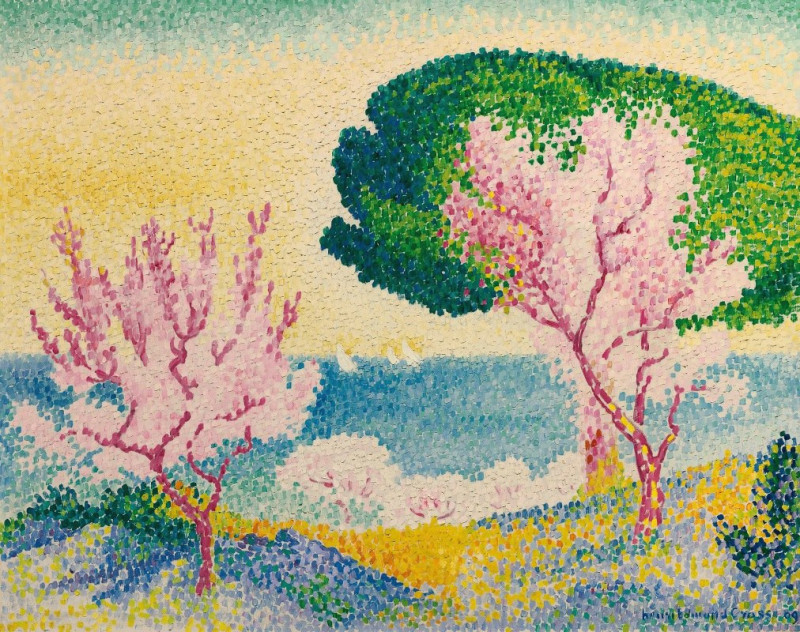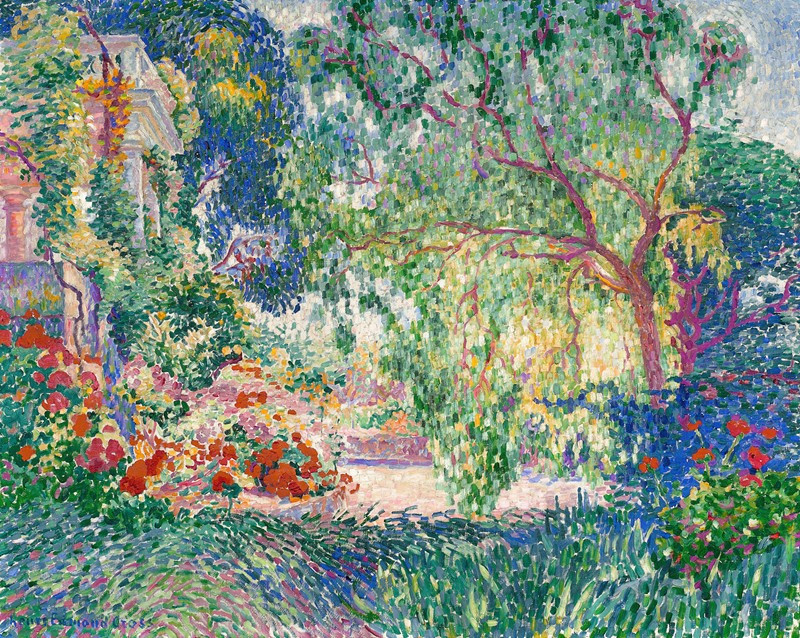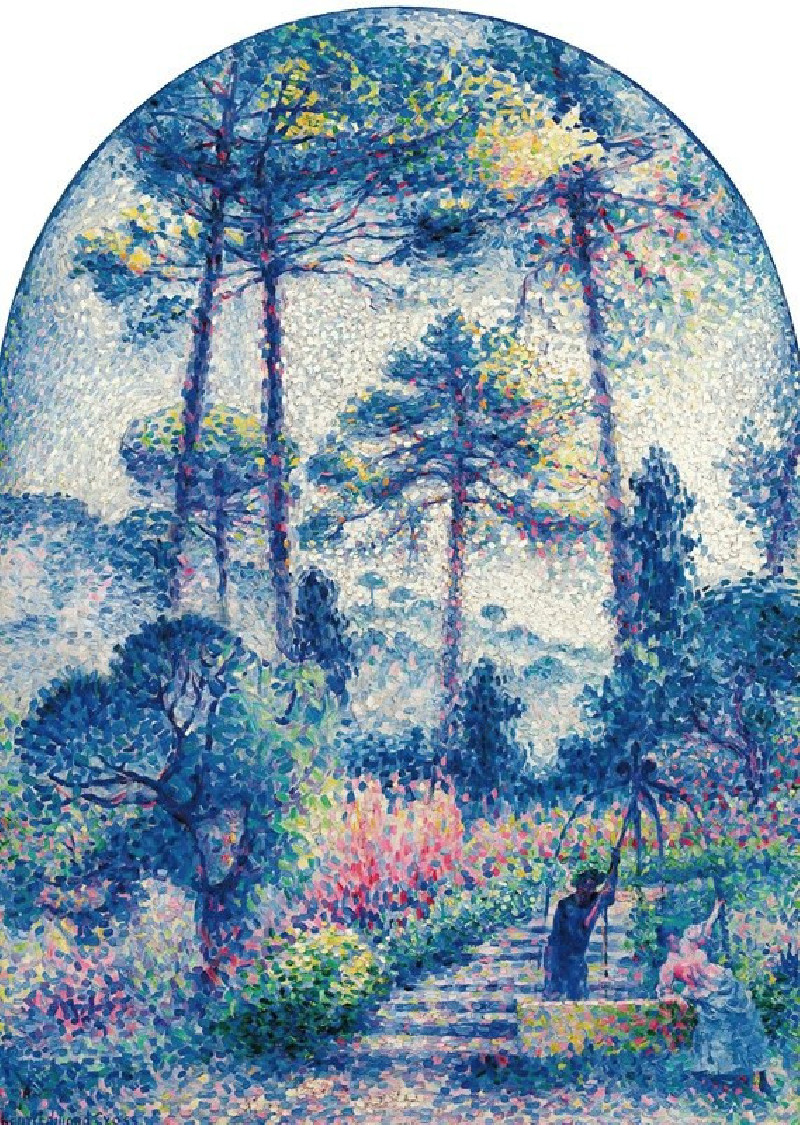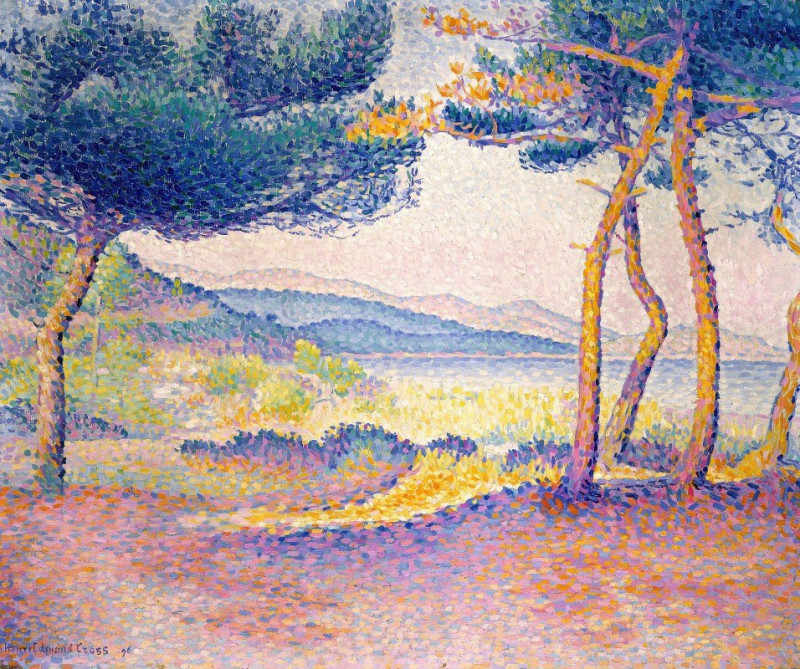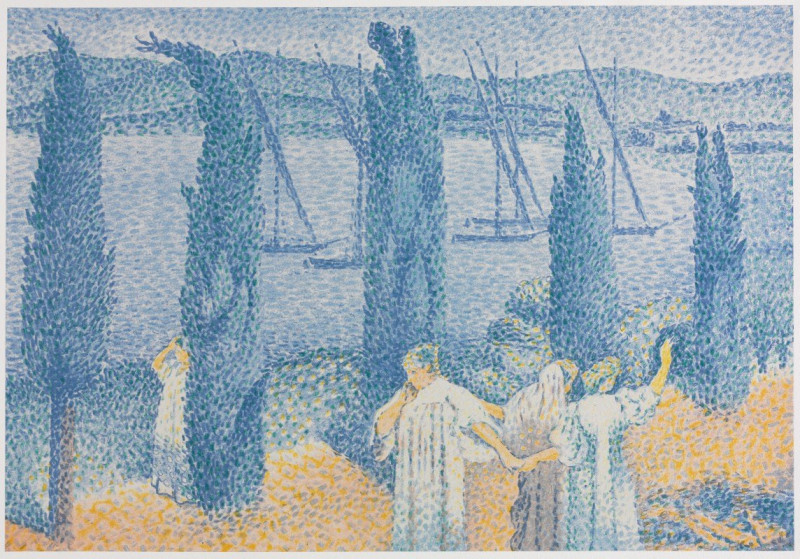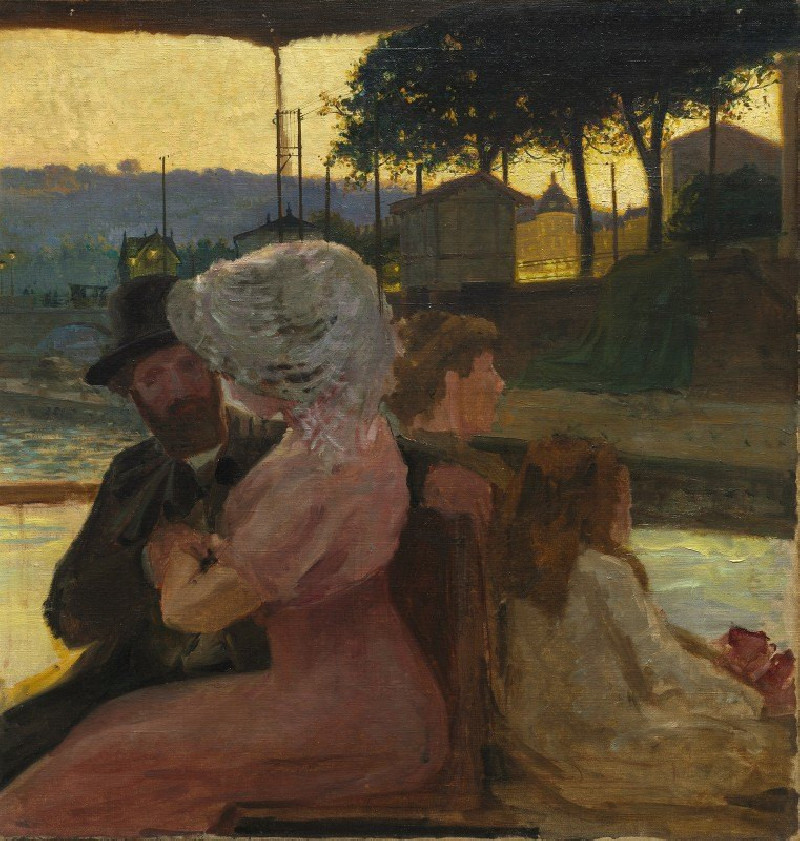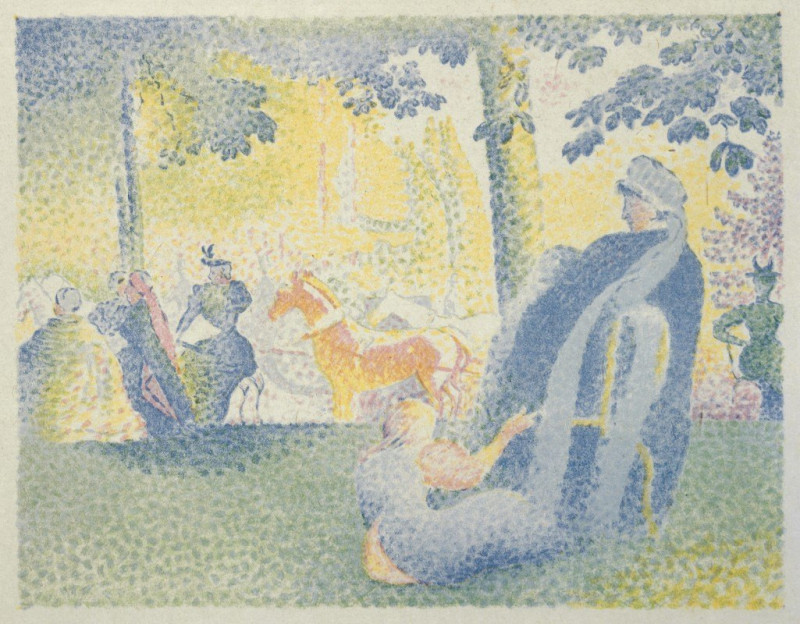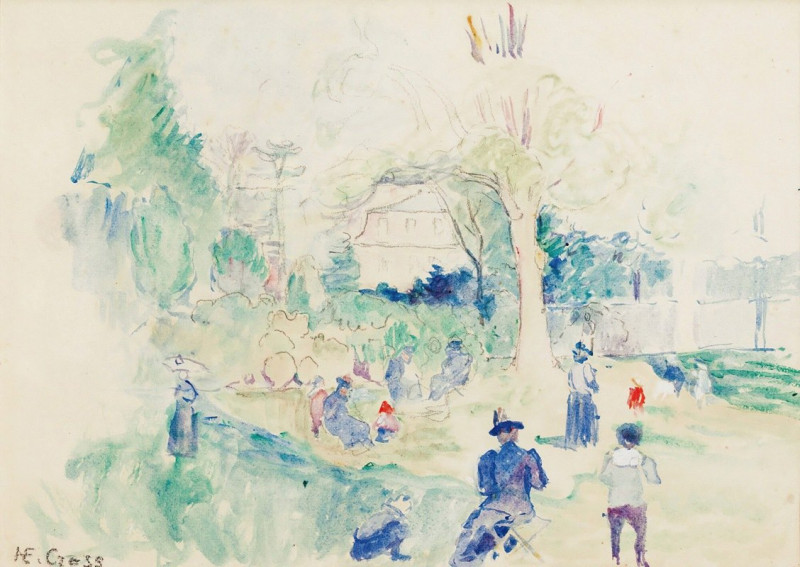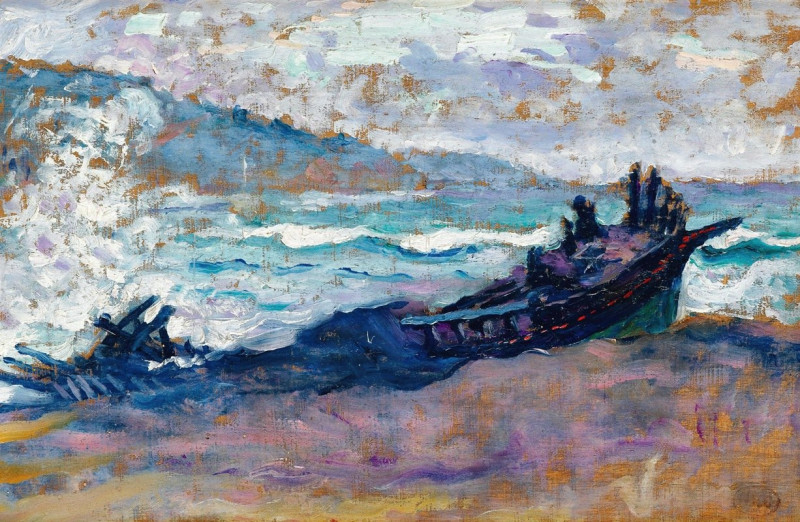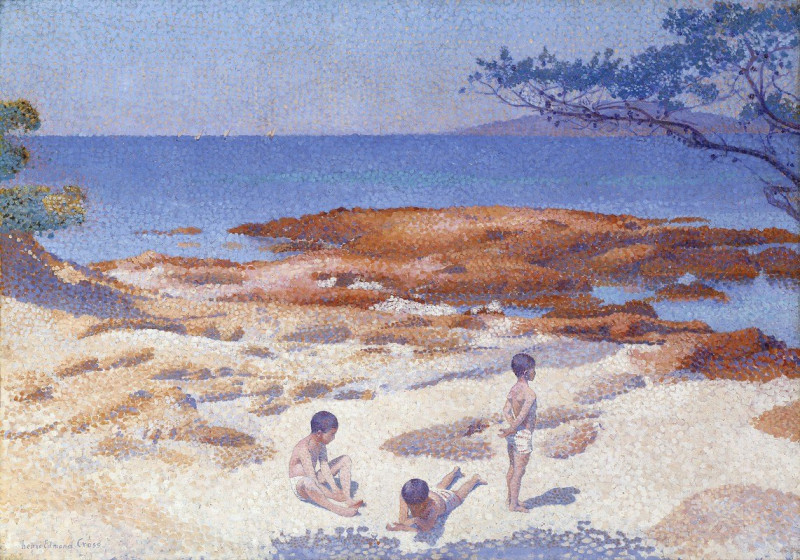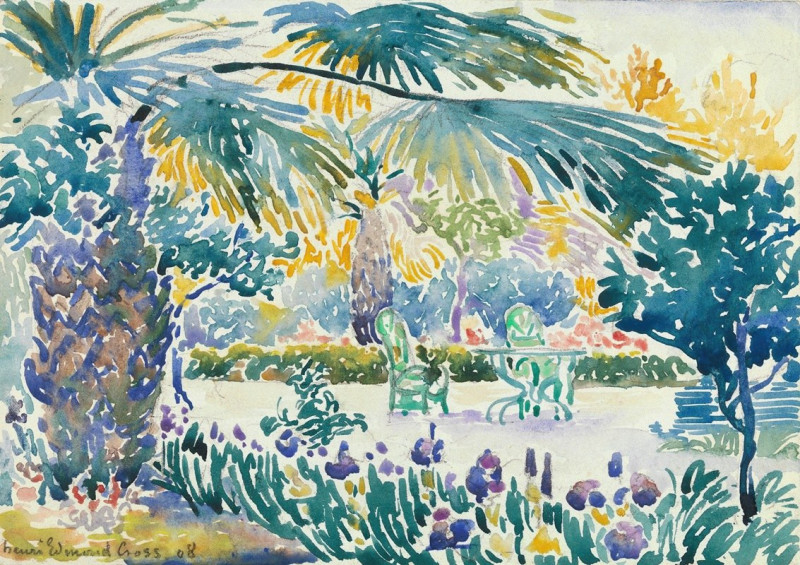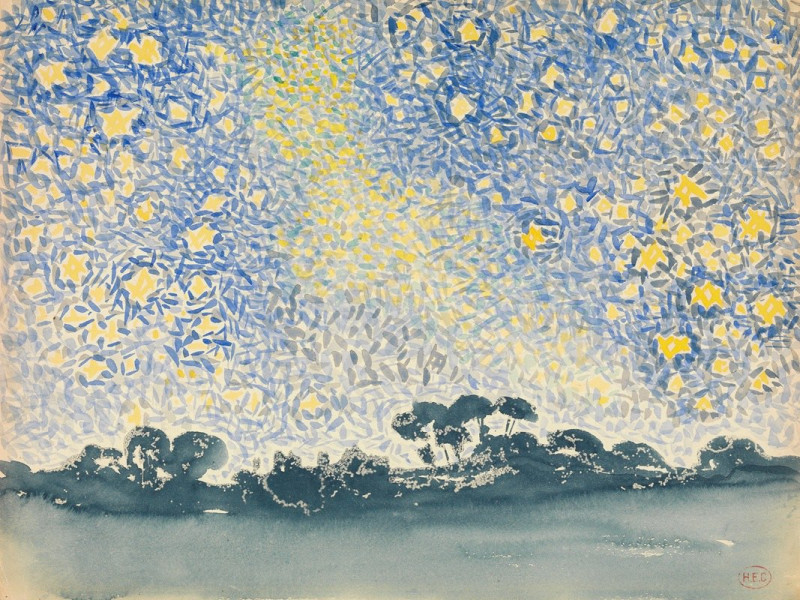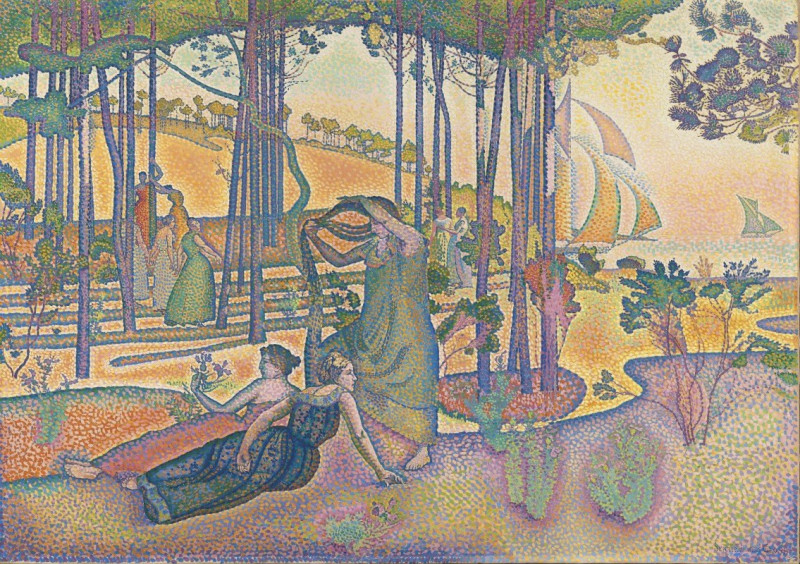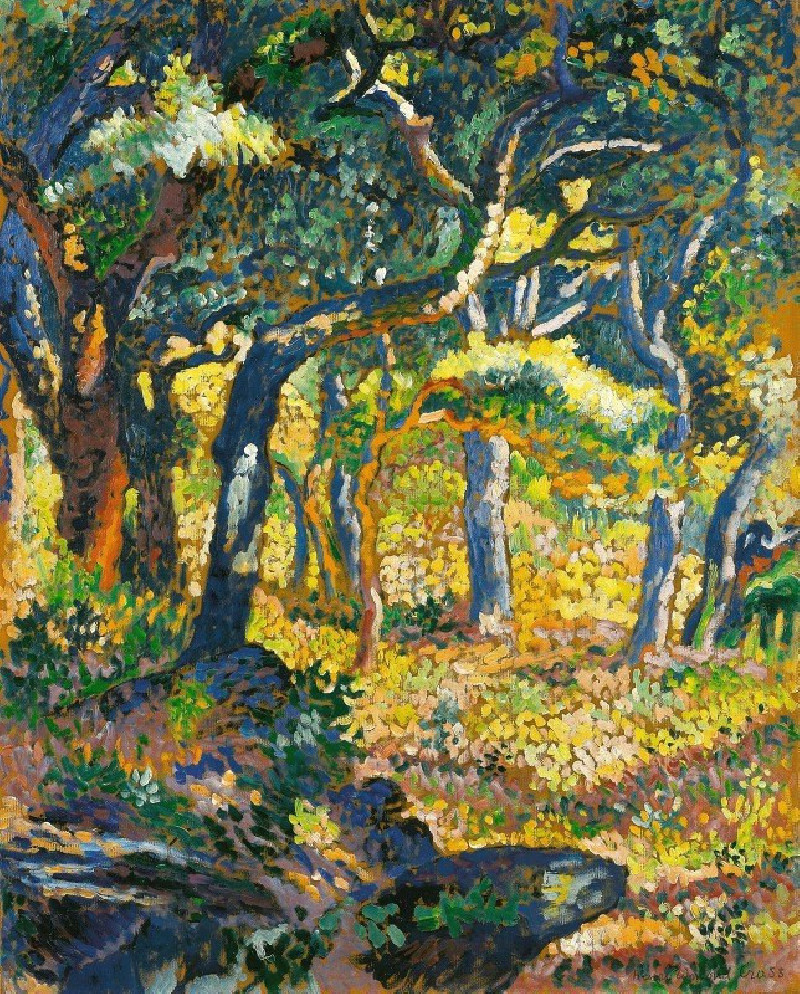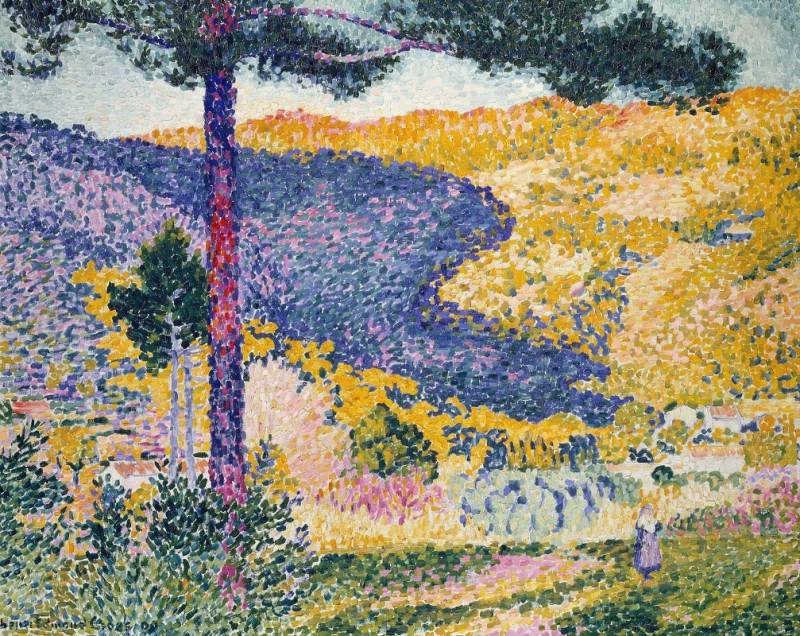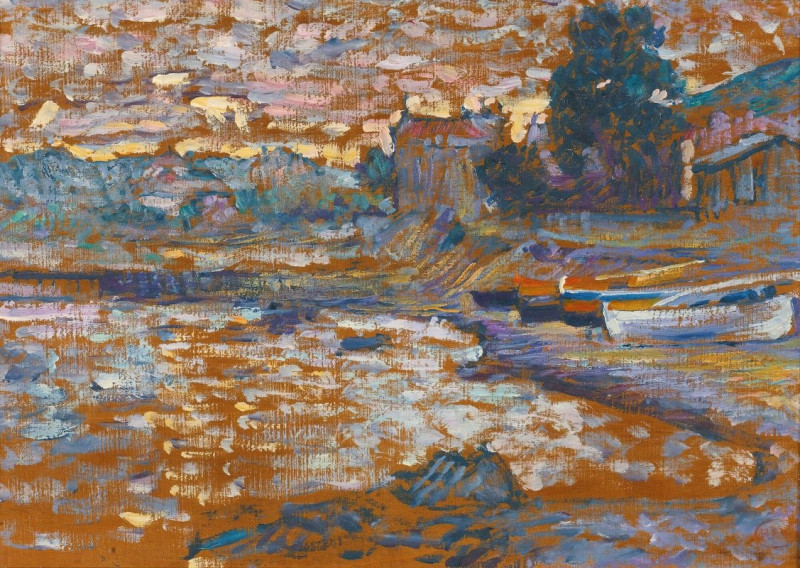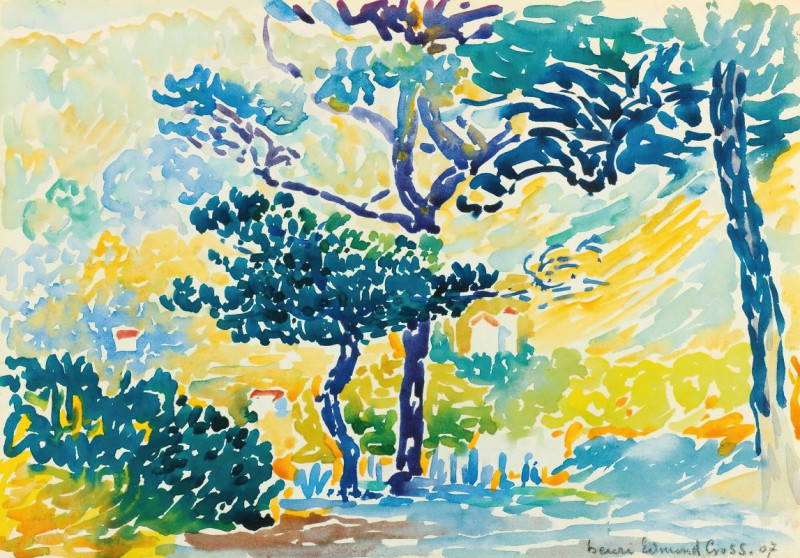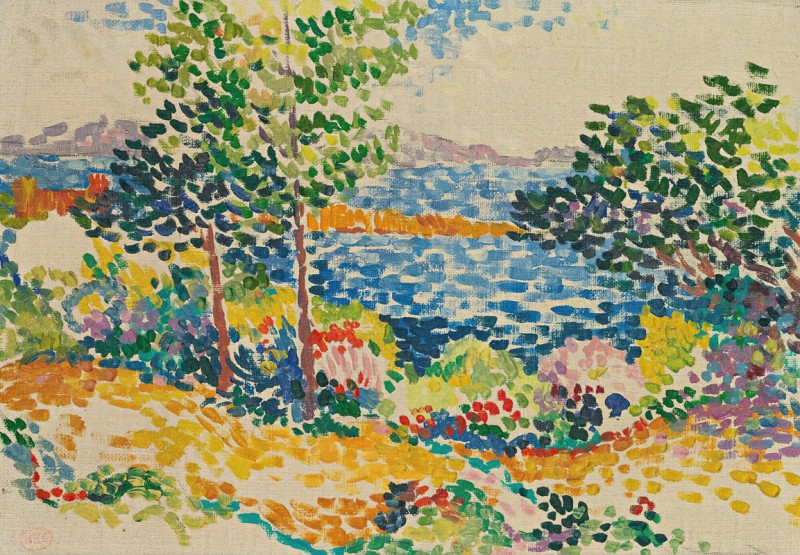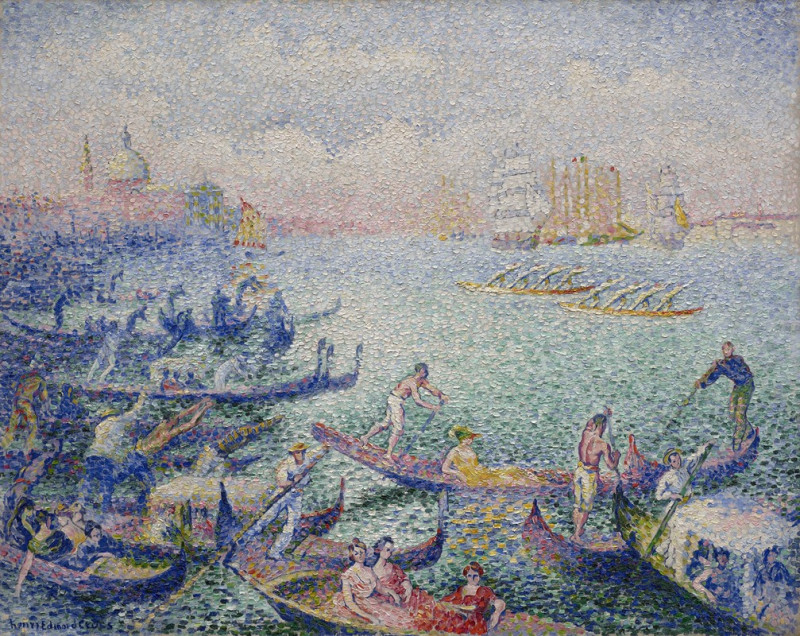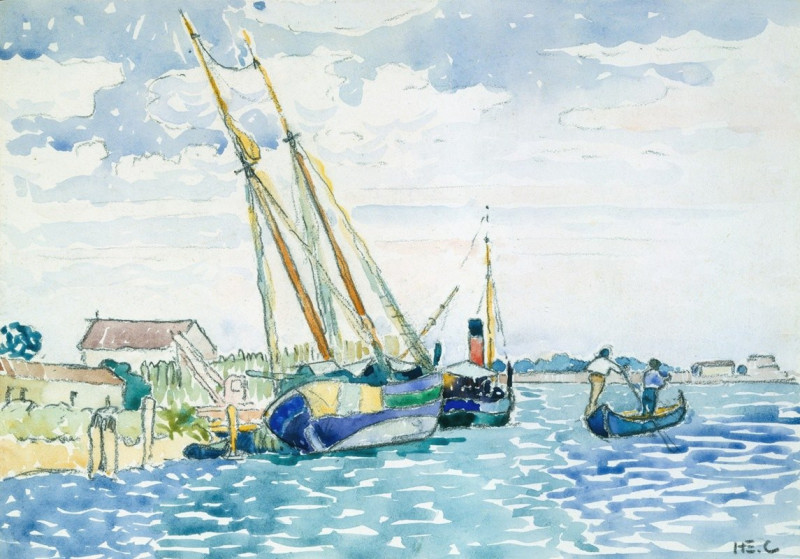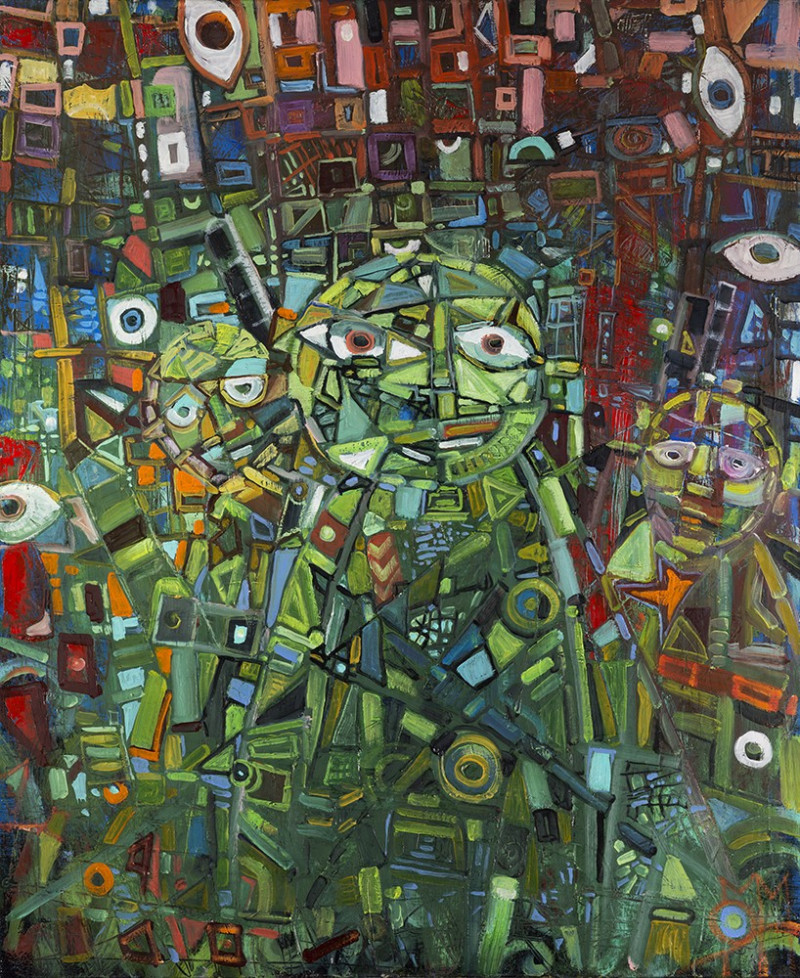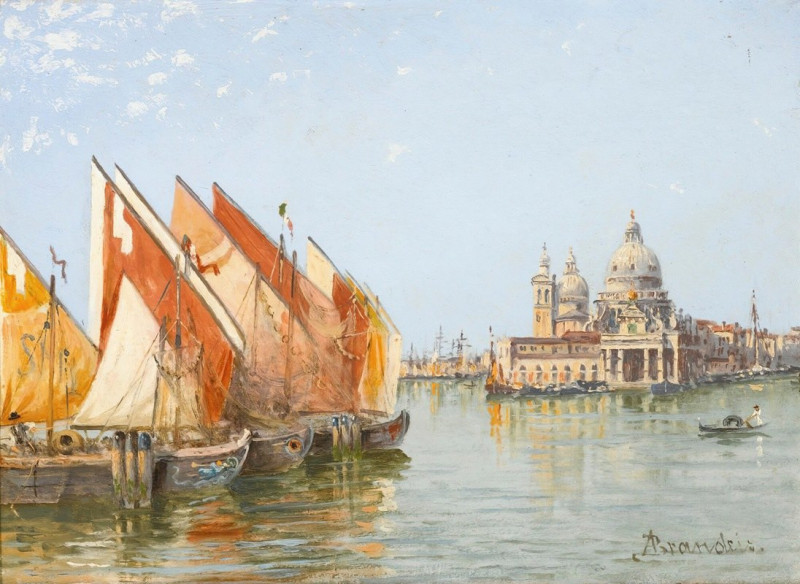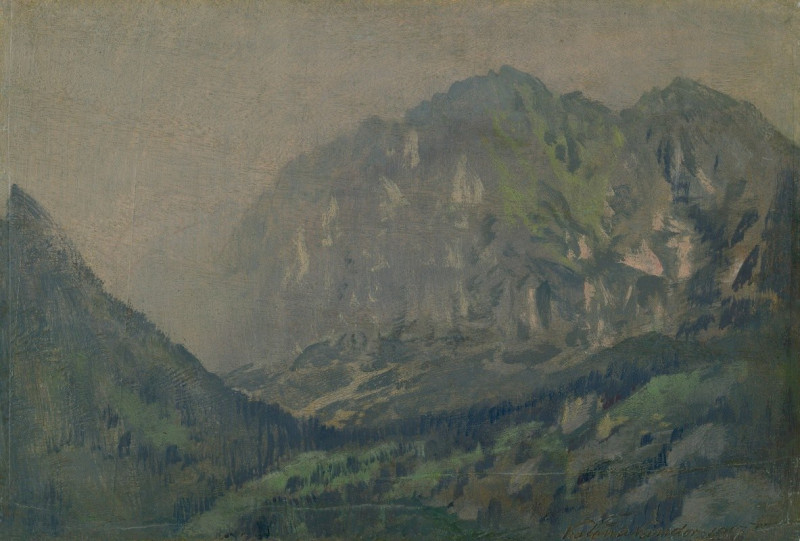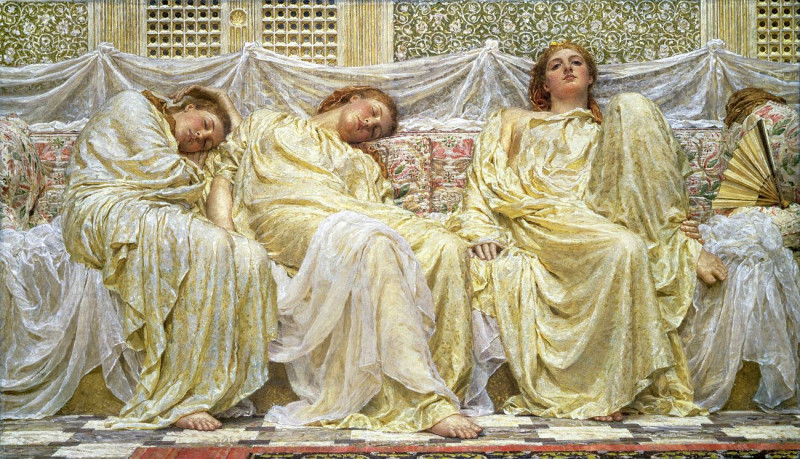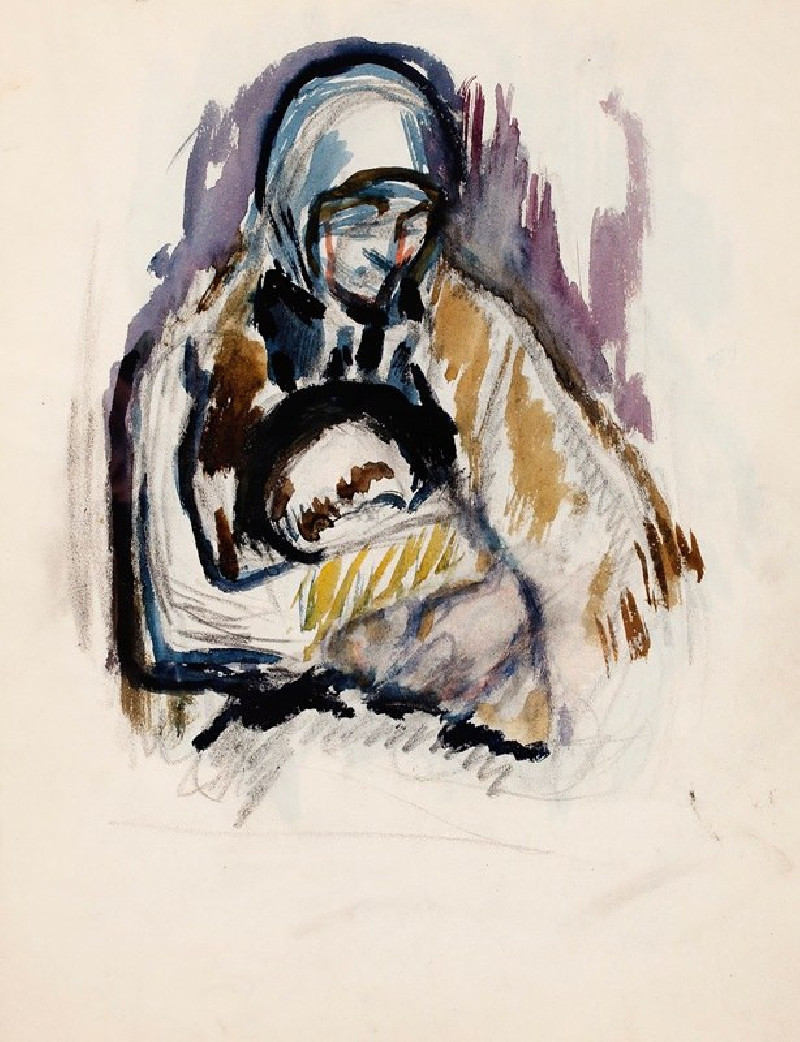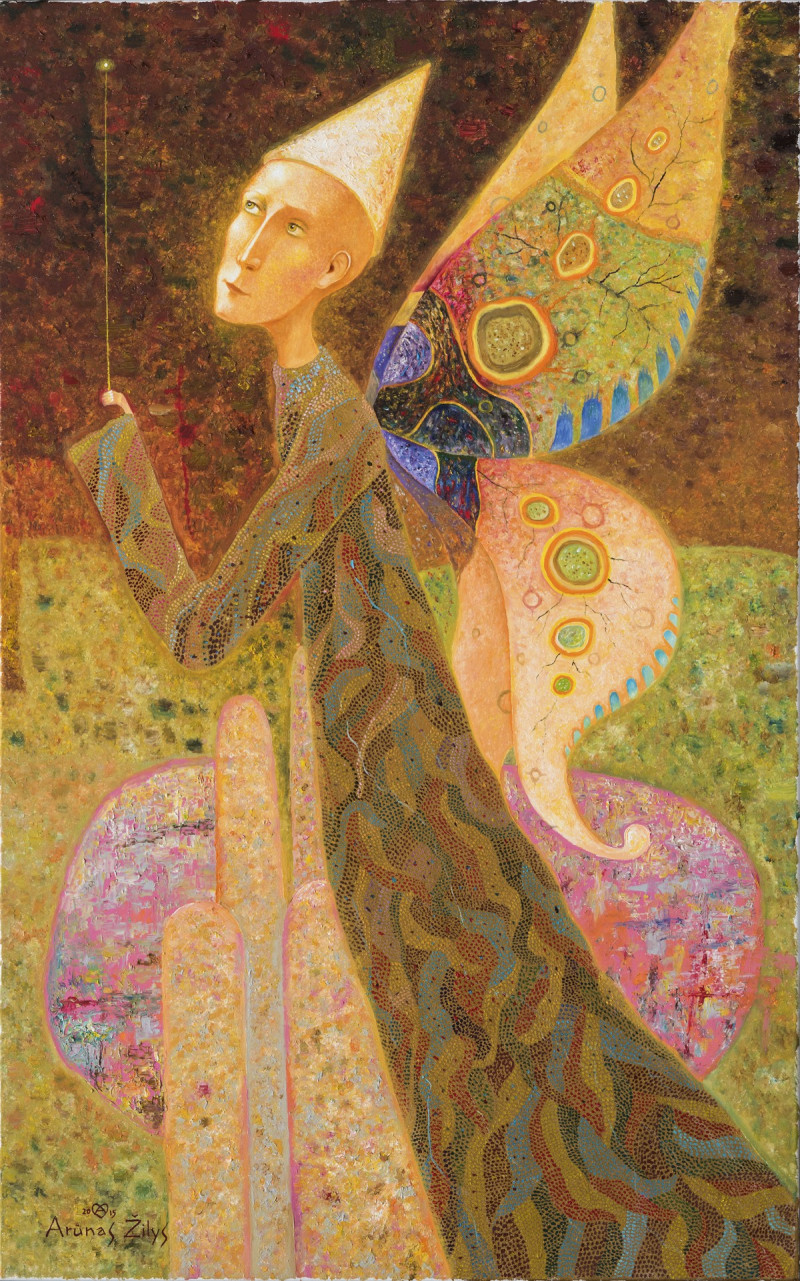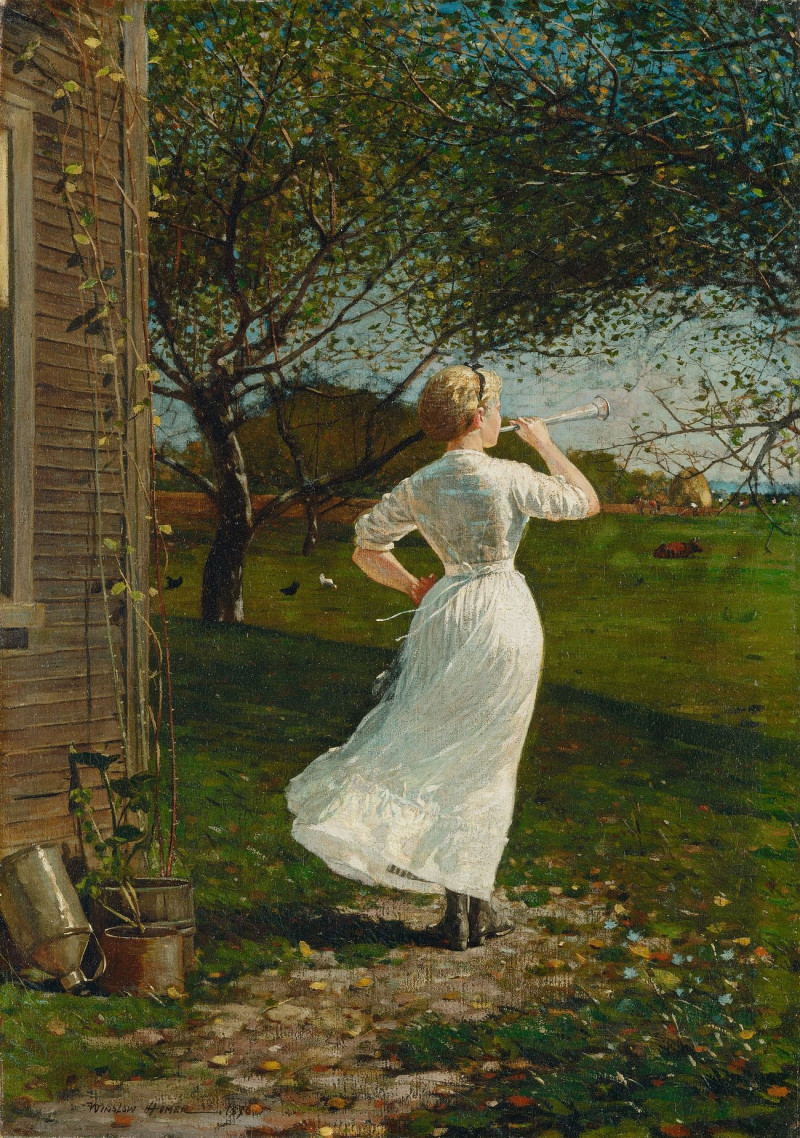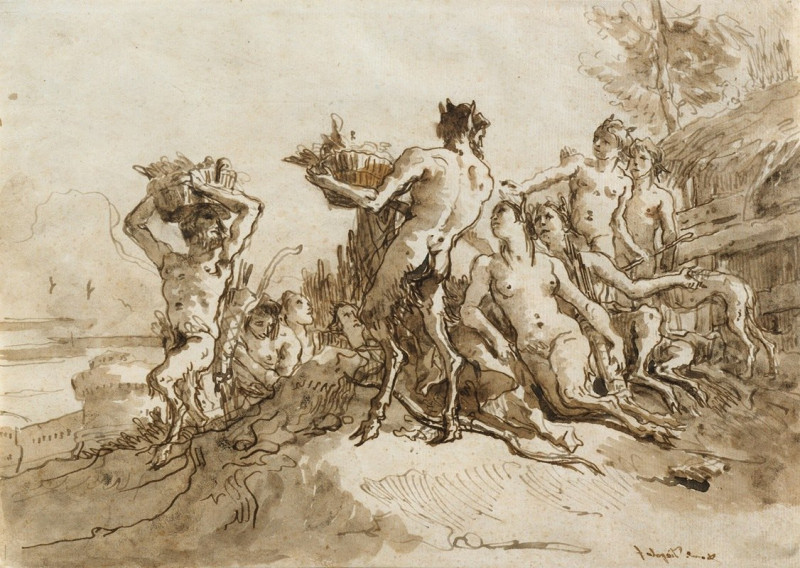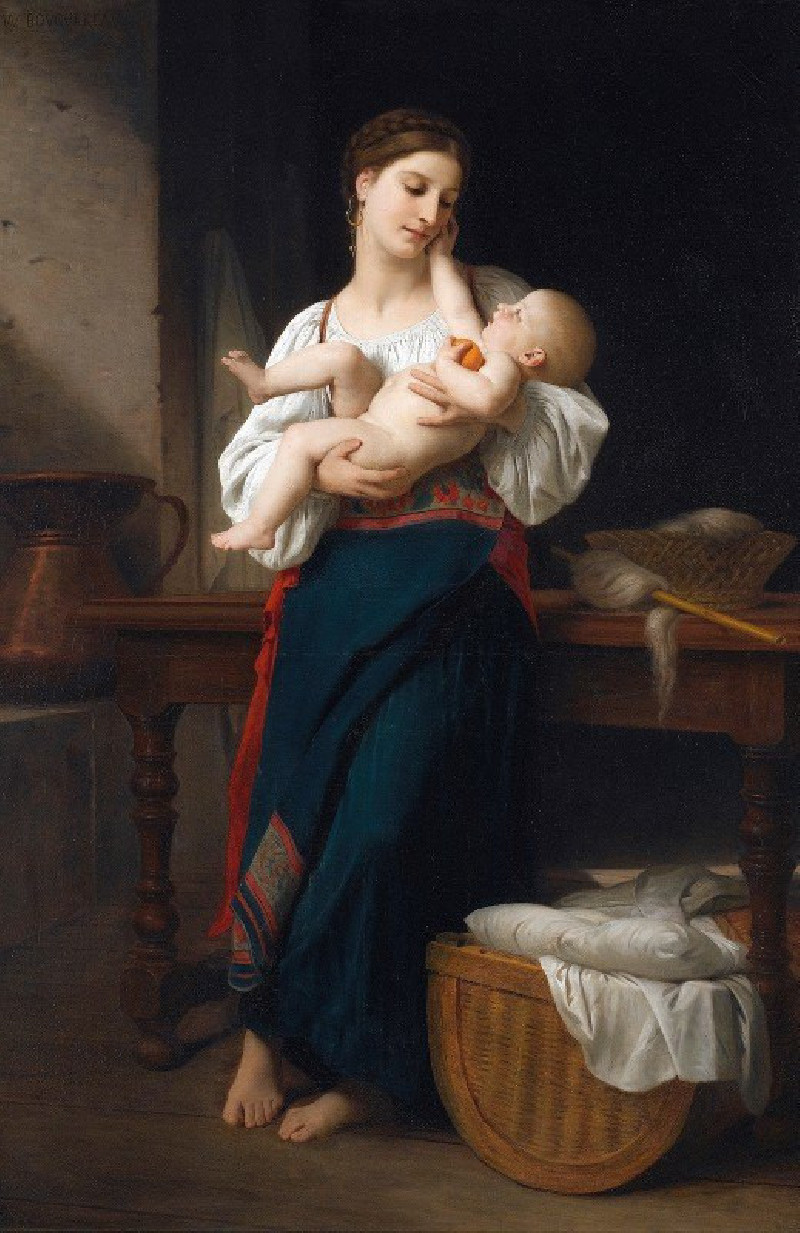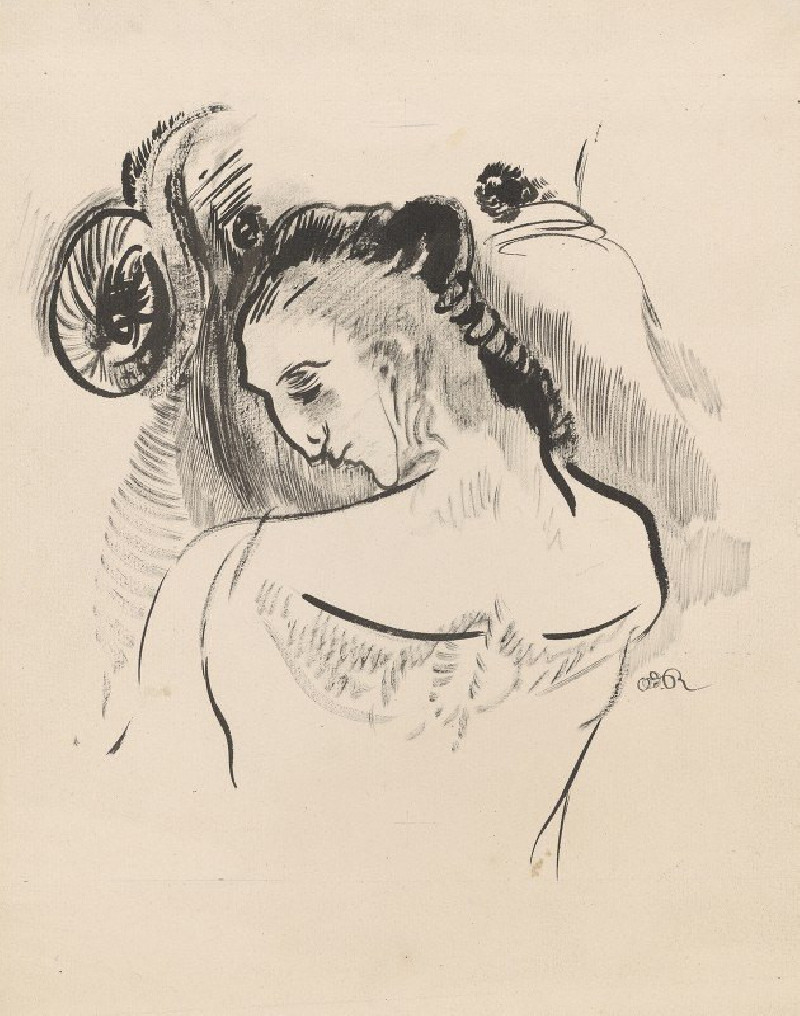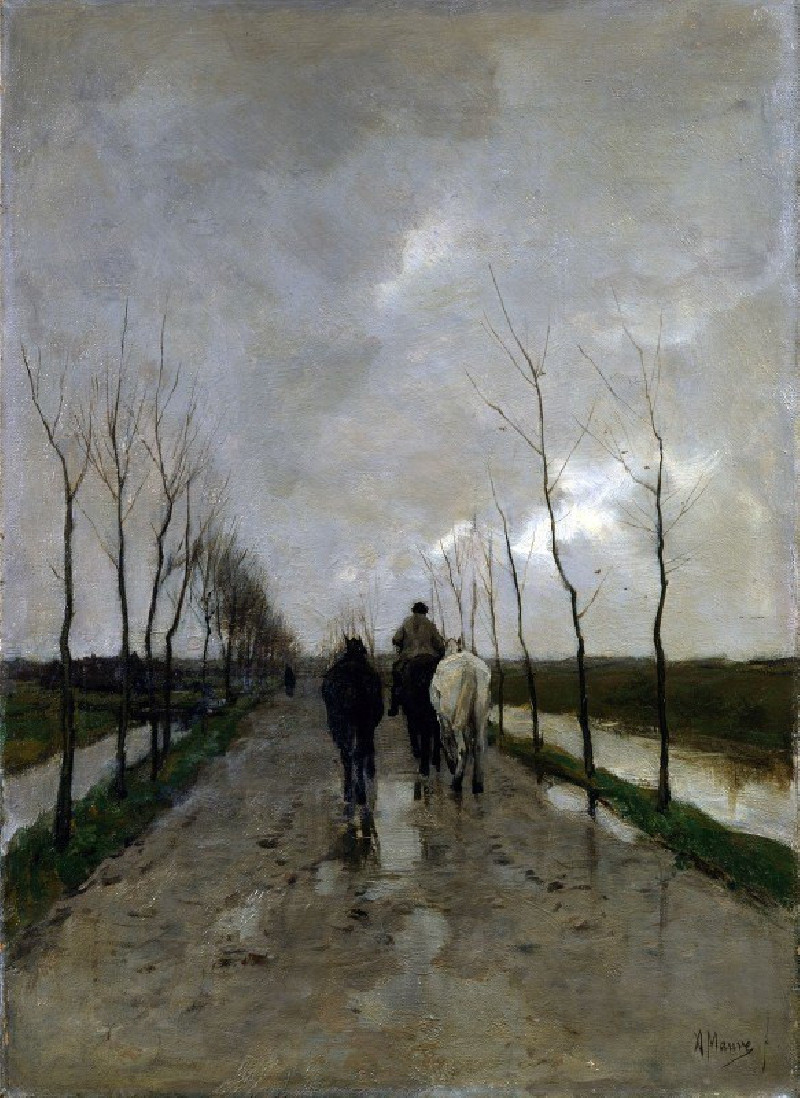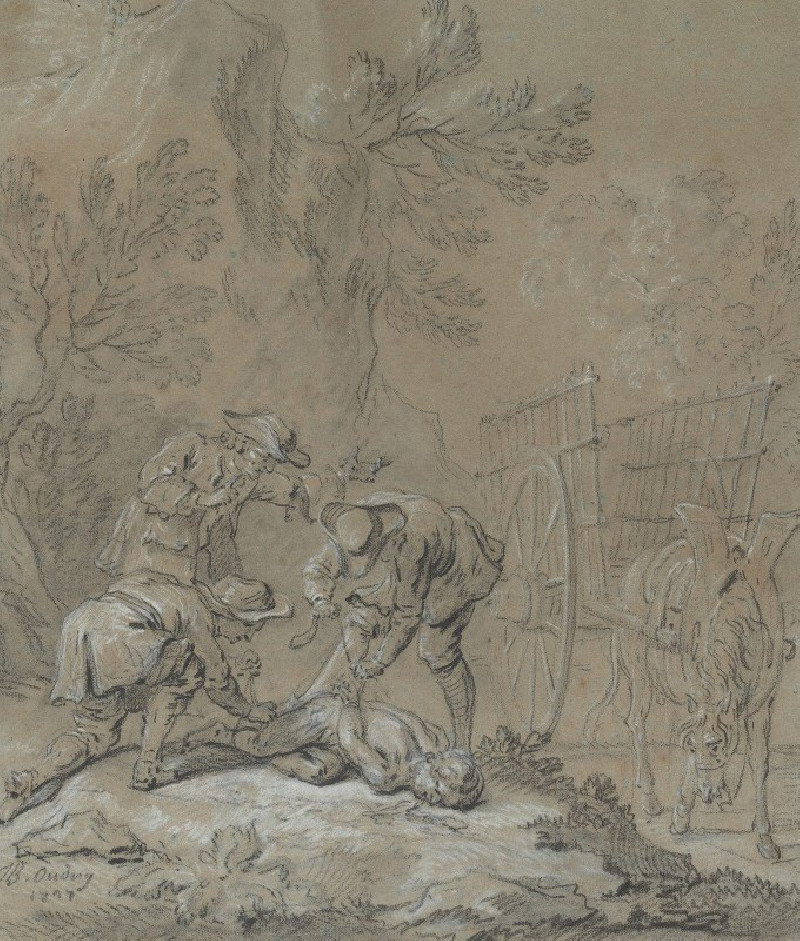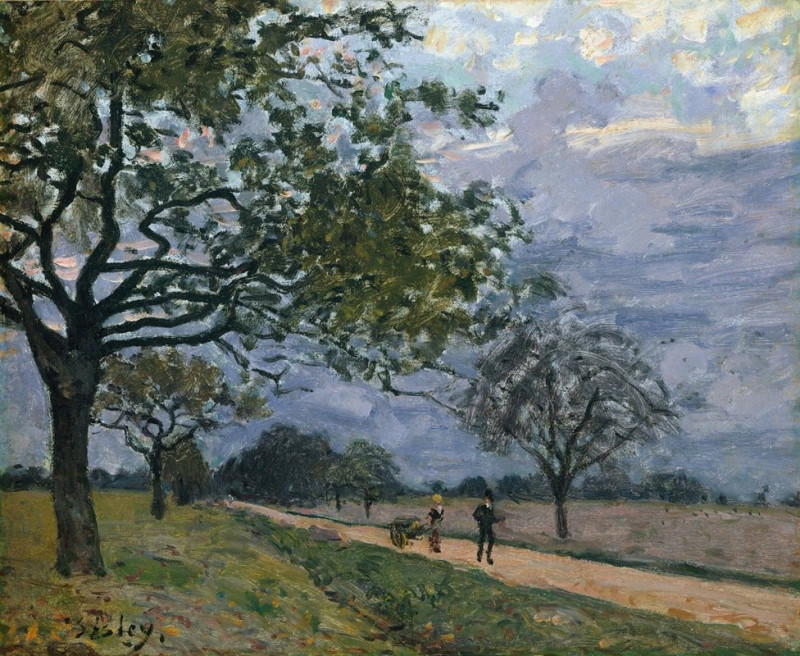La Plage De Saint-Clair (1896)
Technique: Giclée quality print
Recommended by our customers
More about this artwork
Henri-Edmond Cross’s painting "La Plage De Saint-Clair" is a luminous example of the Neo-Impressionist style, characterized by its vibrant colors and pointillist technique. Created in 1896, the work depicts a serene view of the Saint-Clair beach, capturing a moment of tranquility and the natural beauty of the seashore.In the foreground, the viewer's gaze is led by the twisting forms of pine trees, their trunks and branches guiding the eye towards the shimmering sea in the background. These trees artfully frame the beach scene, providing a sense of depth and perspective. Underneath the canopy, specks and dashes of color contribute to a lively, textured ground, mimicking the scattered light and shadow play one would experience under tree cover on a sunny day.The middle distance reveals a beach scattered with figures, possibly local fishermen or beachgoers, embedded within the landscape of gentle shores that meet the calm sea. The horizon is painted with soft hues of pink, blue, and lavender, suggestive of a sunset or a particularly radiant day, where the sky and water seem to merge.Cross's use of pointillism allows for a dynamic interaction between color and light, making the scene pulse with a life of its own. Each dot helps build a vibrant surface that flickers from a distance, creating a visual experience that is both impressionistic and meticulously orchestrated.“La Plage De Saint-Clair” is more than just a portrayal of a location; it is an immersive sensory experience that underscores Cross’s fascination with color theory and his masterful ability to evoke emotion and atmosphere through a distinct and innovative style.
Delivery
Returns
Henri-Edmond Cross, born Henri-Edmond-Joseph Delacroix, (20 May 1856 – 16 May 1910) was a French painter and printmaker. He is most acclaimed as a master of Neo-Impressionism and he played an important role in shaping the second phase of that movement. He was a significant influence on Henri Matisse and many other artists. His work was instrumental in the development of Fauvism.

